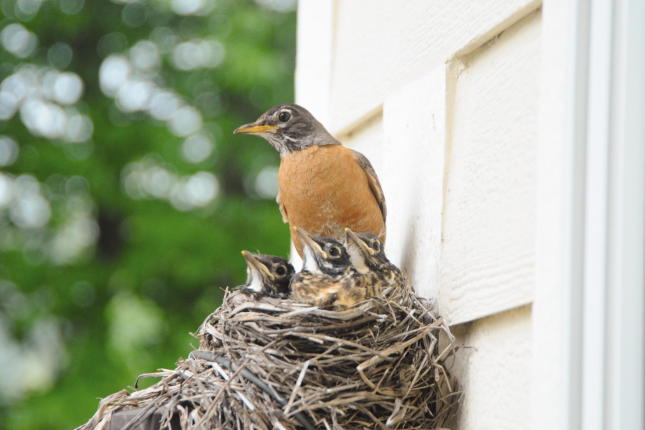 Nesting Fun Facts
Nesting Fun Facts
Spring is around the corner and now is the time birds start evaluating their nesting options. A bird's primary consideration when choosing a nesting site is protection from predators and proximity to food. Abundant and easily obtained sources of food allow for more time to be devoted to better nest site selection and construction of higher quality nests, along with more time and energy to be vigilant in defense of the nesting territory from interlopers and predators. A study published in the England’s Royal Society journal Biology Letters found that birds with winter access to the extra nutrition that feeders provide will lay their clutch of eggs earlier and fledge an average of one more chick per clutch than do their counterparts with no access to feeders.
Here are some fun nesting facts about two favorite backyard birds: Chickadees are cavity nesters. They will excavate their own nest site in a rotten or decaying wood, use an old woodpecker hole or use a nesting box. They add a cozy nest on a moss base.
Robins usually return to the same area to nest each year and may occasionally use last year’s nest again after some renovation. They will use mud in its nest to give it strength. You can put out a small pan of mud and nesting materials (short strings, yarn, dry grasses) and watch the robins come collect materials to make their nests. Unlike most birds, robins do not lay their eggs at sunrise. They lay their eggs several hours later during the mid-morning. Since earthworms are easier to find in the early morning, they feed first thing in the morning and then return to their nest to lay their egg.
Make your yard the yard of choice for nesting birds to enjoy a lively and rewarding summer. Happy Bird Feeding!
(Kathy and her husband, John, own and operate the Wild Birds Unlimited, located in Billings at 111 S. 24th St. West and www.wbu.com/billings).

